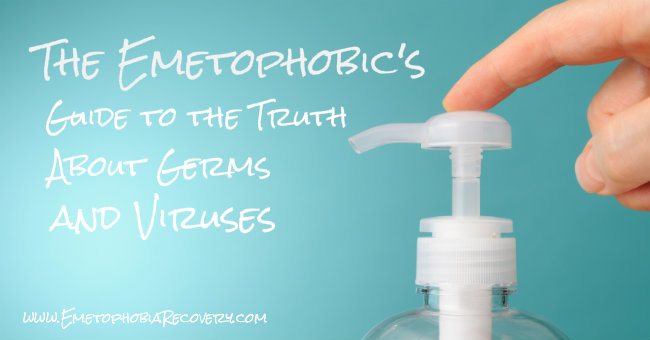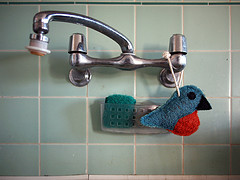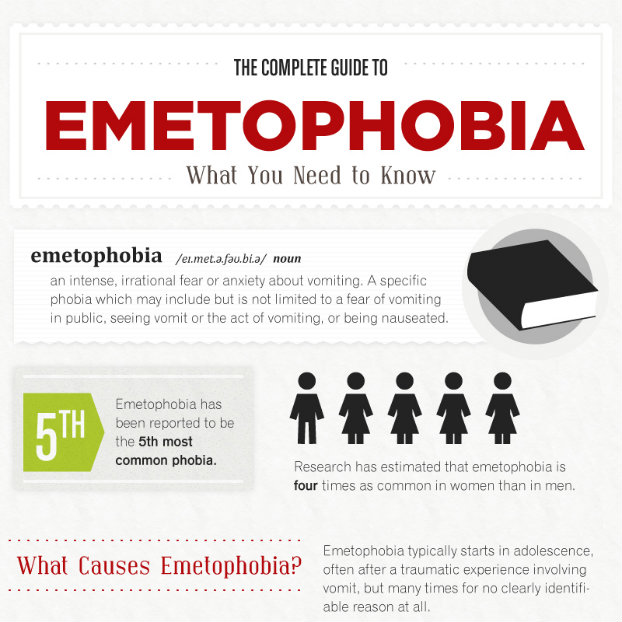 Just because you touch a contaminated surface or even breathe in germs from less-than-ideal air doesn’t mean you’re automatically going to get sick. This should be very good news for emetophobics who may fear even going into the same vicinity as someone who is ill.
Just because you touch a contaminated surface or even breathe in germs from less-than-ideal air doesn’t mean you’re automatically going to get sick. This should be very good news for emetophobics who may fear even going into the same vicinity as someone who is ill.
While hanging out with infected folks is generally not the best of ideas for anyone, it is possible to be exposed to people who are infected without instantly falling ill yourself. Your fear may consistently tell you otherwise, but there is a chance you may not contract an infection at all or you could end up with an infection that does not progress to a full-blown disease due to your bodies natural immunity.
Infection vs. Disease
Infection starts when the viruses, bacteria and other germs enter your body and start to multiply. Your body, however, has natural defenses that kick into gear the moment they note an infection has invaded. The infection can get nipped in the bud before further development, or the infection may prove too hearty for your body to fight off.
Once an infection begins to damage your body’s cells, the germs have moved to the next stage of the game, or the stage known as disease.
Keeping your immune system as agile and strong as possible is a prime way to help your body eradicate infection as quickly as possible before it can develop further. Another helpful emetophobic tip for not getting sick is to declare war on the germiest areas in your home, workplace or out in public.
Carrying around sanitation wipes may brand you a germophobe, but many people that haven’t yet overcome their phobias about vomiting would rather be branded that than get ill. Good old-fashioned hand-washing remains a top means of keeping germs at bay, and you can add that to your repertoire. You’re going to want to after checking out our next section on germ hotspots you may not realize.
Home Germ Hotspots
 Your bathroom may be the first room that comes to mind as a germ generator, but it’s actually your kitchen that may be more packed with the little buggers.
Your bathroom may be the first room that comes to mind as a germ generator, but it’s actually your kitchen that may be more packed with the little buggers.
“It is also technically safer to make a sandwich on a toilet seat than the average cutting board,” reports Australia’s The Daily Telegraph, “such is the amount of bacteria on kitchen surfaces from preparing raw meat.”
The rather disturbing info is courtesy of UA microbiology professor known as “Dr. Germ,” whose official name is Charles Gerber. He’s been involved in numerous germ-related studies and has said more than once kitchens typically out-germ bathrooms since people are constantly cleaning their bathroom areas but not as consistently cleaning the kitchen counters or sink.
Bathroom
Bathroom areas that do contain loads of germs still include the toilet seat – and anything that’s within a nearly 3-foot radius after flushing. Info out of the UA says surface contamination in various areas surrounding the toilet was found up to 38 cm away and up to 30 minutes after the flush. Closing the toilet lid doesn’t help much, as the germs can still wheedle their way out through the gap between the porcelain rim and seat. Exactly how far from the toilet is your toothbrush?
And don’t forget the toothbrush holder. While you may know the brush itself can be a germ haven, those germs can slither down the brush handle to collect and reproduce on the holder. Emetophobics probably realize handling the brush with germy hands adds to the mix. The toothbrush holder was germy enough to be ranked as the third germiest place in the home in a NSF International Study. The study had 22 families swab 30 different areas around the house. The toothbrush holder was the highest-ranking bathroom area on the list, beating out faucet handles, light switches and even the toilet seat.
Kitchen
Kitchen surfaces fare even worse that toothbrush holders, according to the NSF study. Nine out of the 10 germiest places in your home were from things found in the kitchen. Emetophobics should know the germiest places were:
- Sponges and dishrags: Unless you properly sanitize your sponge and dishrags with bleach and hot water washings, they literally suck up germs and then spread them around every time you wipe.
- Kitchen sink: That drain is a major bane, gurgling with all kinds of germs on the sides and bottom, in the strainer and food disposal.
- Pet bowl: When was the last time you cleaned your pet’s food or water bowl?
- Coffee reservoir: This dark, warm and damp location is a prime breeding ground for mold, mildew and bacteria.
- Faucet handles: Yeast and mold like to grow on both kitchen and bathroom faucets, as do certain types of bacteria.
- Pet toys: Do you ever clean your pet’s toys?
- Countertops: Thanks to the germ-ridden dishrags and sponges that contaminate the surface, as well as germy hands passing along stuff picked up from god knows where, coliform bacteria was found on countertops in 30 percent of the homes taking part in the NSF test.
- Stove knobs: The poor, neglected stove knobs can be a veritable carnival of germs due to their neglect.
- Cutting boards: Cutting boards are frequently name-dropped as germy areas, which makes it a bit surprising they ranked way down at the bottom of the NSF list. They did, however, still rank. Cutting boards are known for their ability to harbor germs from use with raw meats, poultry, fish and even fruits and veggies.
More kitchen cautions come from UA. It warns tomatoes are great places for bacteria to colonize while carrots offer a prime colonizing environment for fungus, especially bagged carrots. Mushrooms may contain significant amounts of biofilm, or congregation of microorganisms, in their gill and upper cap areas. And if you’re thinking about breaking out your electric blender or other powered equipment, be forewarned it can spew pathogens up to 13 feet in its surrounding area.
Other Germy Home Areas and Things
Clean laundry may be a myth within itself if you rarely disinfect your washing machine or prefer air-drying loads over the hot germ-killing power of the dryer.
“Your clothes are far germier than your grandparents were because most people use cold water washes and short wash cycles,” Gerba told The Daily Telegraph. “The average wash load has 2 to 3g of feces in it.”
Gerba also pointed out anything that gets a lot of touching, such as your cell phone, computer or TV remote, is also likely to be a riddled with germs. The Daily Mail backed up the cell phone theory by noting mobile phones are germier than toilet handles, with 18 times the amount of bacteria.
Other germy things live in our wallets, widow areas and on top of tall things, according to the Huffington Post. The wallets’ credit and debit cards can be as rife with germs as traditional currency, especially if you frequently swipe them through machines or hand them over to salespeople. Window and door tracks are often ignored, even if mold, mildew and bacteria are washed off the windows and doors themselves.
Perhaps even more ignored germ-factories include the top of the fridge and other tall appliances as well as our rarely cleaned ceiling fans. The latter can be quite good at circulating built-up germs through the air if you’re lax about wiping down the top of the blades.
Workplace Germ Hotspots
 Once again, the bathroom may come to mind as an area where you know plenty of germs are lurking in the workplace. But a study conducted by Gerba in conjunction with hygienists from Kimberly-Clark Professional found other highly contaminated workplace areas as well. The study analyzed nearly 5,000 swabs from office buildings that had more than 3,000 employees with an ATP meter.
Once again, the bathroom may come to mind as an area where you know plenty of germs are lurking in the workplace. But a study conducted by Gerba in conjunction with hygienists from Kimberly-Clark Professional found other highly contaminated workplace areas as well. The study analyzed nearly 5,000 swabs from office buildings that had more than 3,000 employees with an ATP meter.
An ATP meter measures levels of Adenosine Triphosphate, a substance found in all bacteria, yeast and mold cells as well as animal and vegetable cells. Counts ranging from 100 to 300 ATP could use improvement while those above 300 ATP are downright teeming. They found areas with readings above 300 ATP to be:
- Break room sink handle faucets, with 75 percent of those tested
- Microwave door handles, with 48 percent
- Keyboards, with 27 percent
- Refrigerator door handles, with 26 percent
- Water fountain buttons, with 23 percent
- Vending machine buttons, with 21 percent
Public Area Germ Hotspots
The array of germ hotspots in public areas largely goes back to Gerba’s note that the more people touching the thing, the more germs are likely to be kicking around. Those with vomit fears probably already have a firm grasp on that. But even things that are only touched by a few can still harbor germs likely to contaminate many.
An article in Prevention spells out a load of public germ hotspots, which definitely includes the doctor’s office. But it also contains several areas that may be less obvious to those suffering from emetophobia or anyone else:
- Restaurant menus: Even if you’ve actually seen employees wiping down menus, remember how much fun a germy dishrag can be? Menus are constantly touched and sometimes even chewed on by kids. Bon appetit!
- Restroom door handles and soap dispensers: These two areas may already be old hat to you, now that you know the lowdown on bathrooms. Gerba says soap containers are rarely cleaned, which make soap scum and bacteria build-up a given. Add dirty hands pressing on the lever and you’ve got yourself a bacteria garden. Prevention reports about 25 percent of public bathroom soap dispensers have fecal bacteria contamination.
- Lemon wedges: A study published in the Journal of Environmental Health found infectious microbes in nearly 70 percent of lemon wedges hanging out on restaurant glass rims.
- Condiment Dispensers: Restaurant eating gets another germ plug with the high amount of contaminants likely on ketchup, mustard and other dispensers. Your home salt and pepper shakers are also on the list, the Huffington Post says, with a University of Virginia study finding the shakers had one of the highest concentrations of cold and flu viruses on items around the house.
This post is the first of two in our Emetophobics Guide to the Truth About Germs and Viruses. Click here to read part one.
SOURCES:
- http://iwantmorerodale.com/list/8-germiest-public-places
- http://www.dailymail.co.uk/sciencetech/article-1298057/Mobile-phones-18-times-bacteria-toilet-handle.html
- http://www.dailytelegraph.com.au/news/sydney-news/germs-thriving-in-the-green-age/story-e6freuzi-1226330820067
- http://learnaboutgerms.arizona.edu/how_germs_spread.htm
Photo Credit: Jed Sullivan,Ashley Baxter





